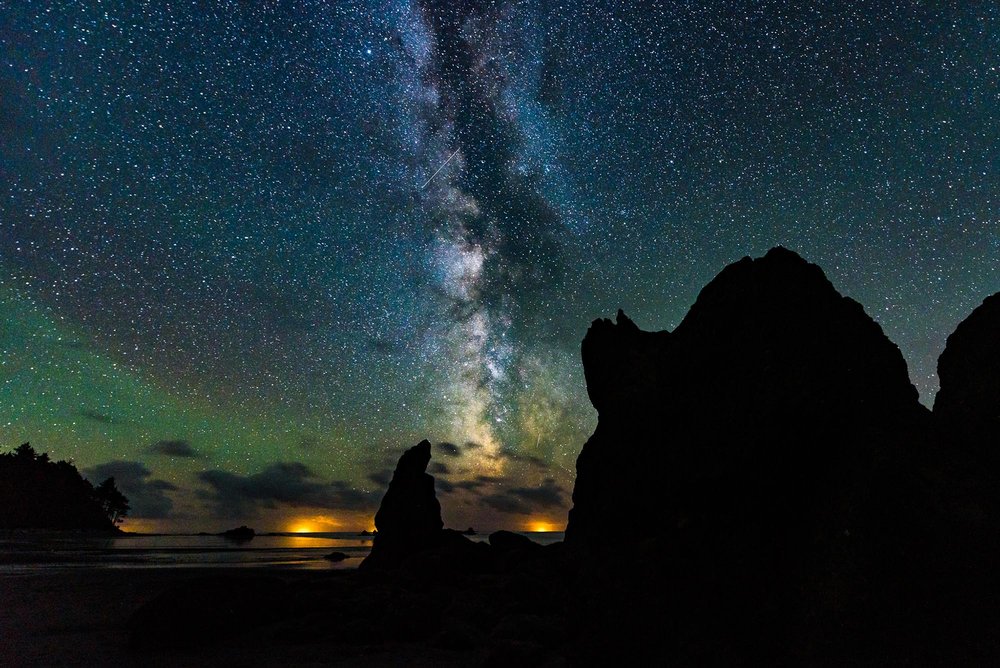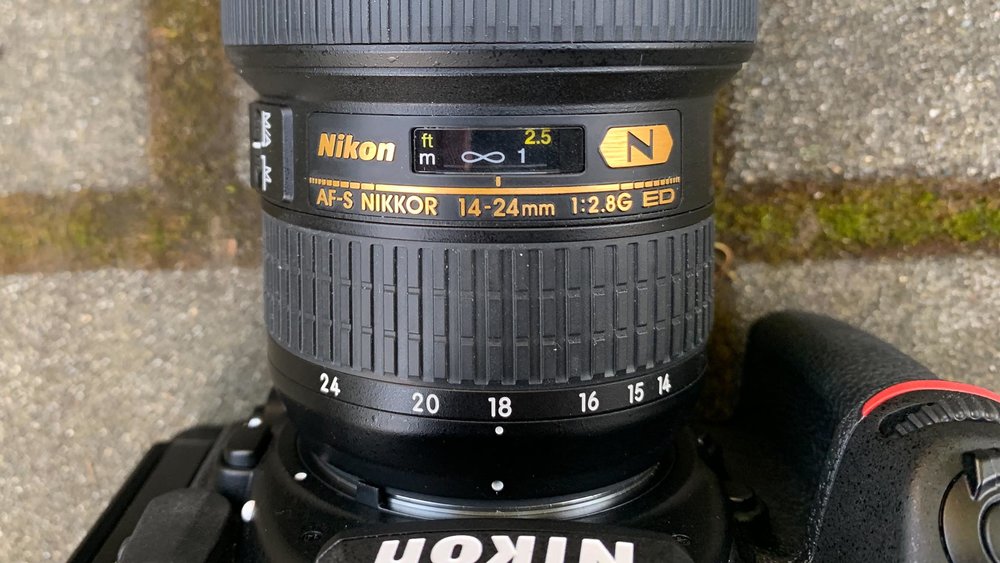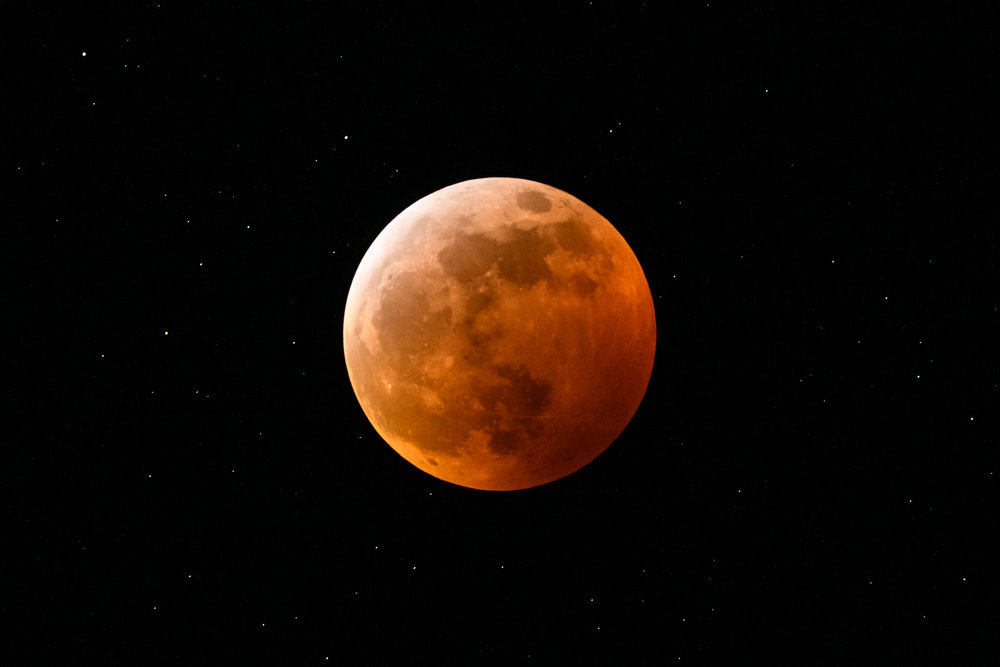
Milky Way over Ruby Beach in Olympic National Park
Photographing the stars at night can reward photographers with stunning images, but it can be challenging to operate the camera in the dark of night. One of the keys to a great shot of the stars is making sure that they are in focus.
Focusing a camera in the dark can be difficult for both you and the camera. Camera focus systems rely on contrast between bright and dark areas of the photo to achieve focus. Under a dark, moonless sky, there simply isn’t enough light for your camera’s auto focus system to work. Using your eyes and the viewfinder won’t be any better.
Sharp stars mean that your lens is focused to infinity where objects at an infinite distance are at their sharpest. On a manual-focus lens, this may be as simple as turning the focus all the way to the hard stop at the infinity symbol ∞. (More on this later.)
Auto-focus lenses can be tricky. Modern auto-focus lenses all focus past infinity, so there is no hard stop on the focus ring, and once you go past infinity focus, your photos will not be sharp. There are a number of reasons for this. The camera’s auto-focus motor is fast and needs room to move in and out without a hard stop. Changes in temperature and changes in focal length on zoom lenses also mean slightly different spots for focusing to infinity.
Here are some techniques to focus to infinity for your next photography adventure under the stars.
Decide on your focal length
If you are going to shoot the stars with a zoom lens, be sure to set your preferred focal length prior to focusing the camera.
Ideally your zoom lens would be “parfocal,” meaning that focus doesn’t change as you zoom in and out. The reality is that most zoom lenses are “varifocal,” where focus changes as zoom magnification changes.
If you are using a 16-35 mm lens, for example, focus at infinity for 16 mm might be slightly different than at 35 mm.
Manual focus lens
A manual focus lens will have a hard stop at infinity focus. In many cases, it may be as simple as turning your focus ring all the way to infinity.
However, manual focus lenses are not always perfect, so it pays to check the sharpness of your stars with actual photographs and make minute adjustments to the focus ring if necessary.
Compose Using Daylight
One of the best ways to set your focus to infinity also requires the most preparation time.
If you arrive at your scene when there is still daylight, even twilight, it allows time to focus your lens on a distant object like a mountain, tree, building or horizon. Move your focus point to the center of the lens, and focus on the most distant object that you can.
Once you have achieved focus, turn your camera to manual focus mode. I find the physical levers or switches for manual focus to be easiest, but you may have to change the focus mode in your menu system. Securing the focus ring on your lens with a piece of gaffer tape can help prevent you from bumping the focus later at night.
Arriving early enough so that you can see the scene gives you the added opportunity to look for compositions of the sky that include foreground objects like trees, rocks or mountains. It is quite difficult to make these composition decisions when you are in a pitch-black environment.
Take a picture of the focus ring on your lens
Many lenses have a focus distance scale viewable through a window on the top of the lens. Having a snapshot of this scale at infinity focus can help you set the proper focus in the dark by moving your lens’ focus ring to that point on its focus scale.
If you are using a zoom lens, set the focal length that you plan on using to shoot the stars. During daylight or twilight hours, focus the lens on the most distant object you can, then take a snapshot of the focus distance scale on your lens.
As an example, my Nikon 14-24mm lens looks like this when focused at infinity, with the focus point to the right side of the infinity symbol ∞.

Nikon 14-24mm focused to infinity
It is important to do this with the exact lens/body combination that you plan to use, as even lenses of the same model might be ever-so-slightly different than one another due to manufacturing tolerances.
Focus on the Moon
If there is a moon in the sky, even a sliver of the moon, use it to focus. The moon is extremely bright, is at an infinite distance and is easy to focus on, even at night, for most auto-focus systems.

Lunar Eclipse – January 20, 2019
Once again, put your focus point in the center of the frame. Put the focus point on the bright part of the moon and focus, either using auto or manual focus. For auto-focus, it will be easiest if you focus on the edge of the moon, which has the most contrast.
Find or Create a Distant Light
A street light, building lights or car headlights in the distance can be bright enough to focus on, so make use of them if they are present.
Of course if you sought out the darkest skies, there may be no option for distant lights. If you have a bright flashlight, use it to illuminate the farthest object that you can and focus on that.
Further away is better, but for a wide angle lens, you should be able to focus at infinity with an object that is at least 25-30 ft or 8-10 m away.
Another option might be to turn on your phone’s flashlight and prop it up somewhere in the distance, then focus on that.
Fiddle with Manual Focus
You snapped a photo of your focus ring at infinity focus like I described above, correct? If so, pull up that snapshot and use your flashlight or headlamp to set the focus ring to that same spot.
Even if you don’t have a snapshot, set the lens at its infinity mark and use trial and error to achieve focus on the stars.
To make the process go faster, crank up your ISO setting as high as you can, say 12,800, 25,600 or higher. This will give you very noisy photos that you aren’t going to keep, but it will enable you to take quicker exposures.
Take a photo, then zoom in as far as you can on the image and look at the size of the stars. You want them to be as small and sharp as possible, not soft blobs of light.
Make very minute changes to your focus ring, take another shot and zoom in on focus again. This process can take a little time, but you can often nail focus with just a few test shots.

Out-of-focus stars
Confirm Focus Throughout the Night
If you are shooting during an extended period at night, be sure to periodically check your focus by zooming all the way in to your photos on the back screen of your camera to check the focus of the stars, in case you have bumped the focus ring of your lens.
Star photos can look awesome on the back screen of your camera when not zoomed in, but you may get home and be disappointed by your stars when you see the photos larger on your computer screen.
Night photography can be tricky when first starting out, but is very rewarding when you get the hang of it. Keep practicing and the process will get easier every time.
Blog Post Written by Kevin Lisota
